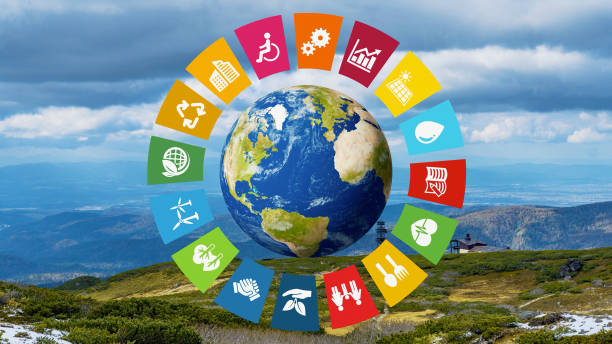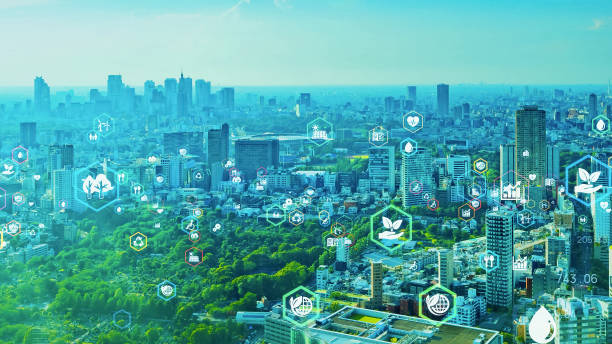In a world that’s becoming increasingly interconnected and interdependent, addressing global challenges is more important than ever. The Sustainable Development Goals (SDGs), adopted by the United Nations in 2015, represent a shared vision for a better and more sustainable future. These 17 goals are a call to action, urging governments, organizations, and individuals to work together to address pressing global issues. In this comprehensive overview, we’ll delve into the SDGs to gain a deeper understanding of their significance and how they are shaping the world.

1. No Poverty (SDG 1)
SDG 1 aims to eradicate extreme poverty by 2030. It addresses various dimensions of poverty and seeks to ensure that all people have equal access to resources and opportunities.
2. Zero Hunger (SDG 2)
This goal focuses on ending hunger, improving food security, and promoting sustainable agriculture. It strives to ensure that no one goes to bed hungry.
3. Good Health and Well-being (SDG 3)
SDG 3 seeks to ensure access to healthcare services for all, reduce mortality rates, and promote overall well-being. It encompasses issues from maternal and child health to the control of diseases.
4. Quality Education (SDG 4)
Quality education is seen as a fundamental right. This goal aims to ensure inclusive and equitable education for all and promote lifelong learning opportunities.
5. Gender Equality (SDG 5)
Gender equality is not only a human rights issue but also essential for achieving all other SDGs. This goal targets the elimination of gender-based discrimination and violence.
6. Clean Water and Sanitation (SDG 6)
Access to clean water and sanitation is crucial for human health and well-being. SDG 6 focuses on the availability and sustainable management of water resources.
7. Affordable and Clean Energy (SDG 7)
SDG 7 seeks to ensure access to affordable, reliable, and sustainable energy sources. This goal plays a pivotal role in mitigating climate change.
8. Decent Work and Economic Growth (SDG 8)
Economic growth that is inclusive and promotes decent work for all is the primary focus of this goal. It emphasizes job creation, entrepreneurship, and workers’ rights.
9. Industry, Innovation, and Infrastructure (SDG 9)
Advancements in technology, infrastructure, and innovation are essential for sustainable development. This goal encourages investment in these areas.
10. Reduced Inequality (SDG 10)
Addressing economic and social inequalities is a core element of the SDGs. This goal calls for policies that reduce inequality within and among countries.
11. Sustainable Cities and Communities (SDG 11)
As the world urbanizes, creating sustainable cities and communities is imperative. This goal aims to ensure access to adequate housing, transportation, and green spaces.
12. Responsible Consumption and Production (SDG 12)
To reduce the strain on our planet’s resources, this goal promotes sustainable consumption and production patterns.
13. Climate Action (SDG 13)
As climate change accelerates, SDG 13 calls for urgent action to combat it. It includes raising awareness, reducing greenhouse gas emissions, and building resilience.
14. Life Below Water (SDG 14)
The preservation of marine life and ecosystems is the core of this goal. It focuses on sustainable fisheries, marine pollution prevention, and ocean conservation.
15. Life on Land (SDG 15)
This goal aims to protect, restore, and sustainably manage terrestrial ecosystems, halt deforestation, and combat desertification and land degradation.
16. Peace, Justice, and Strong Institutions (SDG 16)
SDG 16 focuses on promoting peaceful and inclusive societies, providing access to justice, and building effective, accountable, and inclusive institutions.
17. Partnerships for the Goals (SDG 17)
The final goal emphasizes the importance of global partnerships. It recognizes that achieving the SDGs requires collaboration between governments, civil society, and the private sector.
The SDGs are not isolated objectives but an interconnected framework, recognizing the complex and interdependent nature of global challenges. They are a blueprint for building a more sustainable, equitable, and peaceful world.
To achieve these goals, collective action is essential. This involves governments aligning their policies, businesses adopting sustainable practices, and individuals making conscious choices in their daily lives. Understanding the SDGs is the first step towards making a meaningful impact, and as we work together to achieve them, we move one step closer to a brighter and more sustainable future for all.
